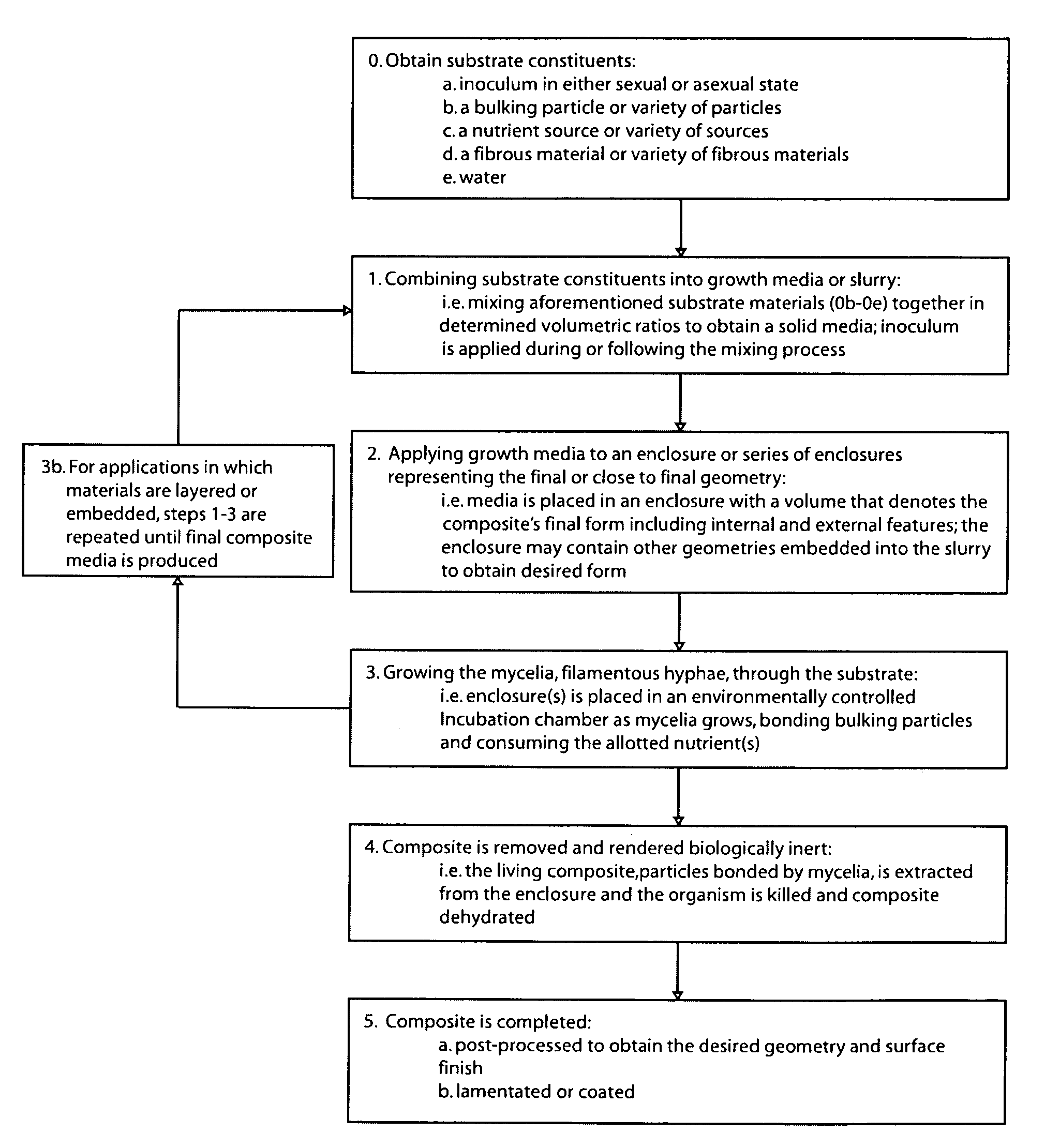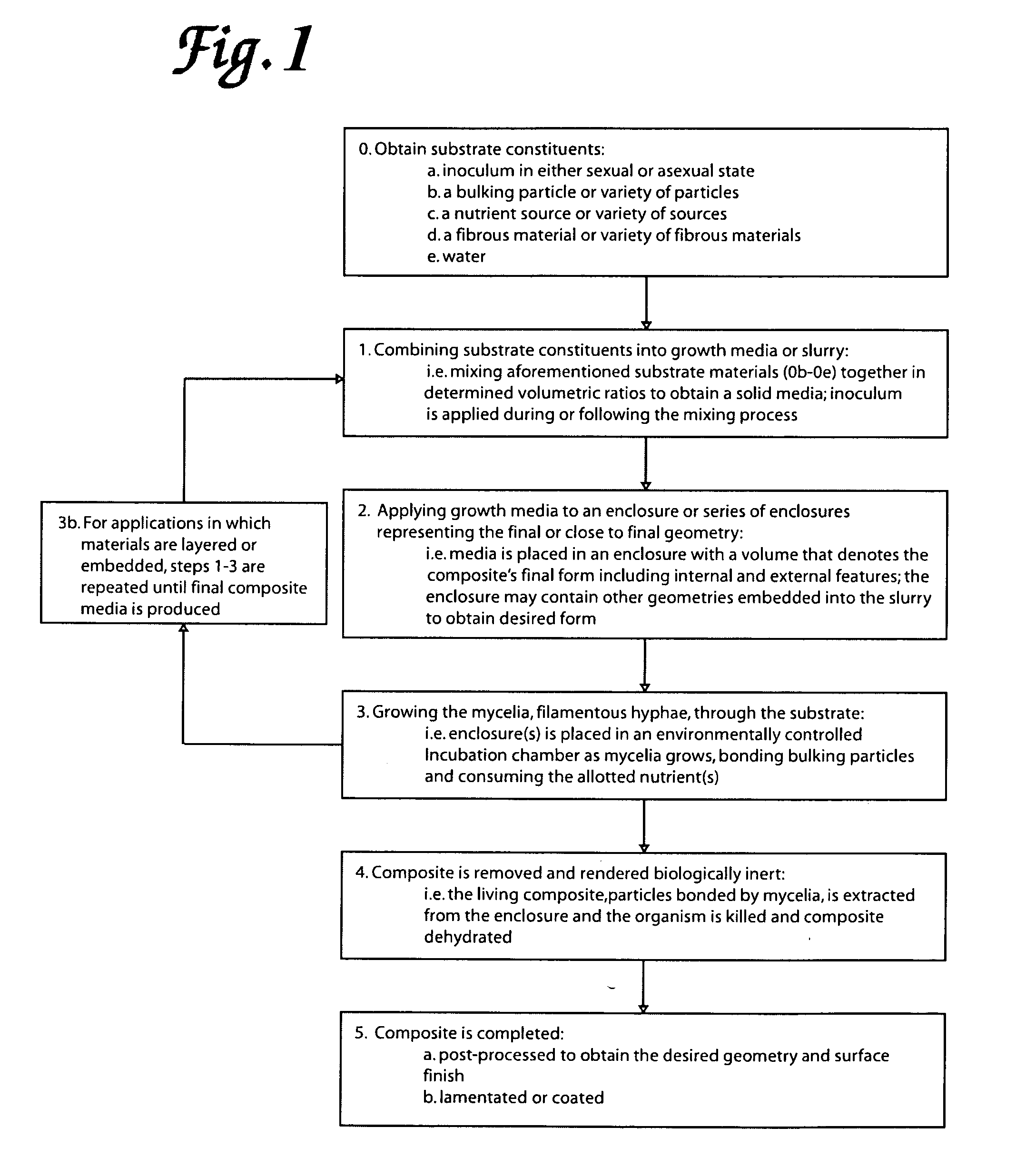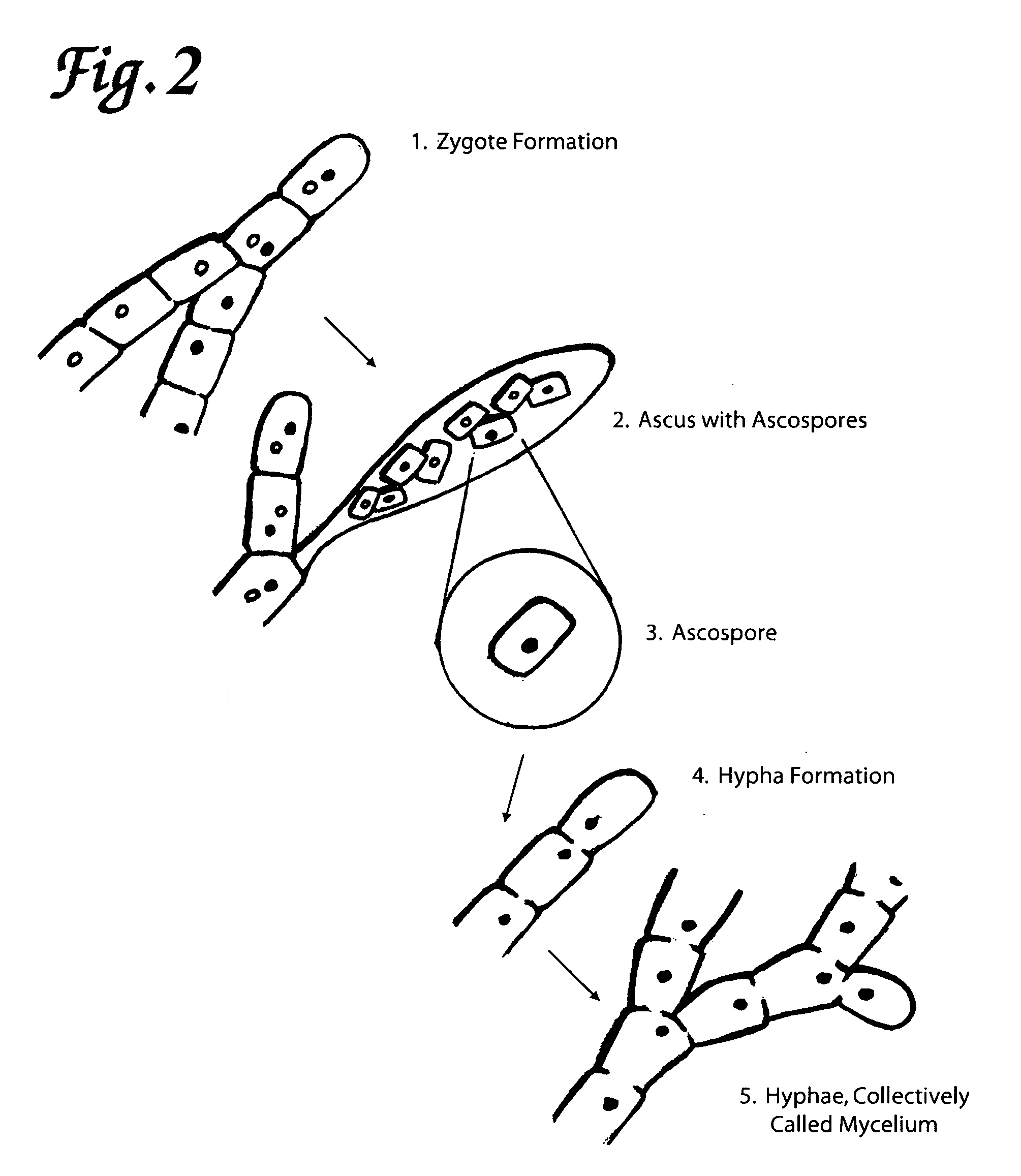Method for producing grown materials and products made thereby
a technology of grown materials and products, applied in the direction of inorganic carrier, packaging foodtuffs, packaged goods, etc., can solve the problems of high energy consumption, high cost of such materials, and high environmental downsides of many materials and composites
- Summary
- Abstract
- Description
- Claims
- Application Information
AI Technical Summary
Problems solved by technology
Method used
Image
Examples
example 2
Layered Molding
[0114]To produce a grown material using a “layered enclosure based” manufacturing technique, the following steps are taken:[0115]1. Creation of an engineered substrate composed partially or entirely of nutritional particles, fibers, and other elements, and composed partially or entirely of non-nutritional particles, fibers, and other elements.[0116]2. Disposition of a fraction of the engineered substrate to an enclosure or series of enclosures with voids designed to produce the desired final shape.[0117]3. Inoculation of the substrate within the enclosure with the inoculum containing the desired fungi strain or type. Inoculation can also occur during the substrate creation stage, prior to moving the substrate into the enclosure or series of enclosures.[0118]4. Growing the desired fungi strain through the engineered substrate within the enclosure or enclosures.[0119]5. Adding, as desired, additional layers of the engineered substrate or additional layers of an engineer...
example 3
[0132]To produce a grown material using a “continuous based” manufacturing technique the following steps are taken:[0133]1. Creation of an engineered substrate composed partially or entirely of nutritional particles, fibers, and other elements, and composed partially or entirely of non-nutritional particles, fibers, and other elements.[0134]2. Disposition of the substrate to an open-ended enclosure or series of enclosures with continuous voids designed to produce the desired final shape.[0135]3. Inoculation of the substrate within the enclosure with the inoculum containing the desired fungi strain or type. Inoculation can also occur during the substrate creation stage, prior to moving the substrate into the enclosure or series of enclosures.[0136]4. Growing the desired fungi strain through the engineered substrate within the enclosure or enclosures.[0137]5. Moving the substrate through the open ended enclosure such that the initial inoculated substrate volume re...
example 4
Static Embodiment—Composite
[0139]FIG. 6 shows a perspective view of one embodiment of a mycelia bonded composite composed of nutritional particles, bulking particles, fibers, and insulating particles. In this embodiment of a mycelia bonded composite, the following growth conditions and materials were used: The engineered substrate was composed of the following constituents in the following percentages by dry volume:[0140]1. Rice Hulls, purchased from Rice World in Arkansas, 50% of the substrate.[0141]2. Horticultural Perlite, purchased from World Mineral of Santa Barbra, Calif., 15% of the substrate.[0142]3. DGS, dried distillers grains, sourced from Troy Grain Traders of Troy N.Y., 10% of the substrate.[0143]4. Ground cellulose, composed of recycled paper ground into an average sheet size of 1 mm×1 mm, 10% of the substrate.[0144]5. Coco coir, sourced from Mycosupply, 10% of the substrate.[0145]6. Inoculum composed of rye grain and inoculated with Plearotus Ostreatus, 3% of the subs...
PUM
| Property | Measurement | Unit |
|---|---|---|
| Temperature | aaaaa | aaaaa |
| Length | aaaaa | aaaaa |
| Time | aaaaa | aaaaa |
Abstract
Description
Claims
Application Information
 Login to View More
Login to View More - R&D
- Intellectual Property
- Life Sciences
- Materials
- Tech Scout
- Unparalleled Data Quality
- Higher Quality Content
- 60% Fewer Hallucinations
Browse by: Latest US Patents, China's latest patents, Technical Efficacy Thesaurus, Application Domain, Technology Topic, Popular Technical Reports.
© 2025 PatSnap. All rights reserved.Legal|Privacy policy|Modern Slavery Act Transparency Statement|Sitemap|About US| Contact US: help@patsnap.com



